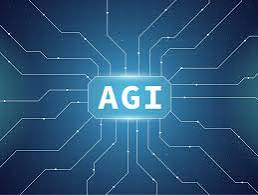Digital banking is a system that uses technology. It provide banking services online. It allows people to manage their money. They do not visit a physical bank. With digital banking, users can check their account balance, transfer money and can pay bills. They can also apply for loans, and even invest all from their phone or computer.
How It Works?
Banks create apps and websites for their customers. These platforms let users access banking services anytime. Instead of visiting a bank branch, people can complete transactions in seconds.
A. Features of Digital Banking

Online Account Access :Check your balance and transaction history anytime.
1. Money Transfers
Send money to anyone instantly.
Bill Payments:Pay electricity, water, internet, and other bills online.
2. Mobile Banking Apps
Manage banking through a smartphone.ATM and Cardless Withdrawals Withdraw money using mobile banking.
3. Loan Applications
Apply for loans without visiting a bank.
4. Investment and Savings
Invest in stocks.Share mutual funds, or fixed deposits online.
5. Customer Support
Get help through chat, calls, or AI-powered chatbots.
B. Difference Between Traditional and Digital Banking
Traditional banking requires people to visit a branch. They wait in lines to deposit, withdraw, or transfer money. Banking hours are fixed, and paperwork is needed for most transactions. It takes time and effort.

Digital banking works online. People can access their accounts anytime by using their mobile apps or websites. They can transfer money, pay bills. They can also check balances instantly. There is no need to visit a bank.
Traditional banking involves more paperwork. Loan applications and account openings require physical documents. Digital banking is mostly paperless. Transactions and approvals happen faster.
Security in traditional banking is done through face-to-face verification. People show ID cards and signatures. Digital banking uses passwords, OTPs, and biometrics techniques like fingerprints. Encryption keeps transactions safe.
Traditional banking has higher costs. Banks need branches, staff, and paper records. Digital banking is cheaper. Online services reduce operational costs and fees for customers.

Customer support in traditional banking is face-to-face. Digital banking offers chatbots, emails, and phone support, available 24/7.
Traditional banking is good for in-person service. Digital banking is better for speed and convenience. The future of banking is digital.
C. Types of Digital Banking
Digital banking comes in different forms. Each type serves a unique purpose. Below are the main types of digital banking:
1. Online Banking (Internet Banking)

Also called net banking.
Users log in through a bank’s website.
Allows money transfers, bill payments, and account management.
Works on computers and mobile browsers.
2. Mobile Banking

Banking through mobile apps.
Provides fast access to accounts.
Includes features like fund transfers, bill payments, and loan applications.
Secure with fingerprint and face recognition logins.
3. Neobanking (Digital-Only Banks)

100% online banks with no physical branches.
Provides full banking services through apps and websites.
Offers low fees and better digital experiences.
Examples: Revolut, N26, Chime.
4. Digital Wallets (E Wallets)

Stores money digitally for quick transactions.
Used for online shopping and bill payments.
Examples: PayPal, Google Pay, Apple Pay.
5. UPI Based Banking

UPI allows instant money transfers.
No need for bank account details just a mobile number or QR code.
Examples: Google Pay, PhonePe, Paytm.
6. Open Banking

Allows third-party financial services to connect with banks.
Users can access different financial tools in one place.
Helps in budgeting, investments, and credit tracking.
7. Cryptocurrency Banking

It provides banking services for cryptocurrencies.
It allows buying and selling, also storing digital currencies.
Examples: Binance, Coinbase.
8. Contactless Payments

Uses Near Field Communication technology.
Users tap their card or phone to make payments.
Faster than cash and safer than PIN-based transactions.
Digital banking has many forms. Each type offers convenience and security. It is shaping the future of finance.
D. The Need for Digital Banking
Banking has changed. The world is moving fast. People need quick and easy ways to handle money. Digital banking is the answer. It saves time. It offers convenience. It is the future of finance.
1. Convenience for Users

People want easy banking. They don’t like waiting in lines. Digital banking lets them access money anytime. They can check balances from home. They can transfer money with a click. Everything happens fast.
2. Saves Time and Effort

Traditional banking takes time. You travel to a bank. You stand in a queue. You fill out forms. Digital banking removes all that. It takes seconds to complete a task. Life becomes simple.
3. Safe and Secure

Banks take security seriously. Digital banking is safe. Strong passwords protect accounts. Banks use encryption. Fraud detection is active. Customers feel secure using it.
4. Available 24/7

Banks closeat a fixed time. Digital banking doesn’t. It works day and night. People can use it anytime. This makes life easier.
5. Reduces Paperwork

Banking used to require a lot of paper. Forms, checks, and receipts were common. Digital banking removes this. Everything is online. This is good for the environment.
6. Supports a Cashless Economy
People use less cash now. Digital transactions are growing. Mobile payments, credit cards, and online transfers are common. Digital banking makes this possible.

7. Access to Financial Services
Some people don’t have banks nearby. Digital banking helps them. They can use mobile apps. They can open accounts online. Banking reaches everyone.

8. Quick Loan Approvals
Getting a loan takes time. Digital banking speeds it up. People online. The system checks their details. They get loans faster.

9. Easy Bill Payments
People don’t have to go out to pay bills. Digital banking allows them to pay online. They can set automatic payments. This saves time and prevents late fees.

10. Helps Businesses Grow
Businesses need fast transactions. Digital banking helps them. They can pay vendors online. They can accept payments easily. This helps businesses expand.

E. The Future of Digital Banking
The future of digital banking is driven by AIAI and automation. Through it transactions will be faster, safer, and more personalized. Mobile banking will dominate, reducing the need for physical branches. Biometric security and decentralized finance (DeFi) will enhance trust. Innovations like AI-driven advisors will redefine financial management for users.

1. More Advanced Security
Cybercrime is a concern. Banks will improve security. Biometric logins will be common. Face and fingerprint recognition will be used. Fraud detection will get better.

2. Artificial Intelligence in Banking
AI is growing fast. Banks will use AI to help customers. Chatbots will answer questions. AI will detect fraud. AI will personalize banking services.

3. Rise of Digital-Only Banks
Some banks don’t have physical branches. They exist only online. More such banks will appear. They will offer better services. They will reduce costs.

4. Blockchain for Transparency
Blockchain is a secure system. Banks will use it to track transactions. It will prevent fraud. It will increase trust.

5. Better User Experience
Banking apps will improve. They will be easier to use. They will have more features. Customers will have a better experience.
6. Voice Activated Banking

People will use voice commands. They will check balances by speaking. They will make payments using voice assistants. This will make banking even easier.
7. Faster International Transactions
Sending money abroad takes time. Digital banking will make it faster. Payments will happen in seconds. This will help people and businesses.

8. Integration with Other Services
Banking apps will connect with other apps. They will work with shopping and travel services. People will use one app for everything.

9. Personalized Banking
Banks will study user behavior. They will offer personalized services. Customers will get customized offers. They will get better financial advice.

10. A Fully Digital Future
Physical banks may not be needed. Everything may happen online. People may never have to visit a bank again. This could be the future of banking.

Conclusion
Digital banking is necessary. It makes life easy. It saves time and effort. It offers security. It helps businesses and individuals.
The future of digital banking is bright. AI, blockchain, and security will improve. Banking will become even more convenient. The world is moving towards a digital economy. Digital banking will lead the way.



